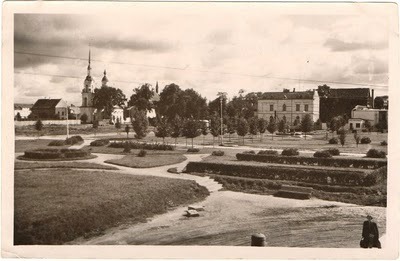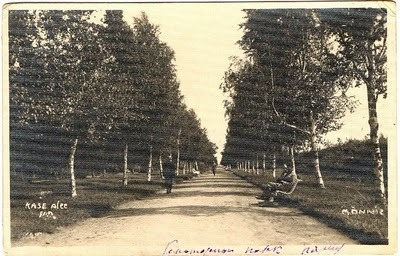Lara Biyuts's Blog, page 8
May 21, 2011
geographical names
Wikipedia about my given name:
Larissa is the capital city of the Thessaly periphery of Greece and capital of the Larissa peripheral unit. It is a principal agricultural centre and a national transportation hub, linked by road and rail with the port of Volos and with Thessaloniki and Athens.
Antiquity. The name Larissa, inherited from the Pelasgian settlers— an alternative name for the district was Pelasgiotis— was common to many Pelasgian towns: the ancient Greek word larissa means "stronghold".
The area around Larissa was extremely fruitful; it was agriculturally important and in antiquity was known for its horses.
Larissa, sometimes written Larisa on ancient coins and inscriptions, is near the site of the Homeric Argissa. It appears in early times, when Thessaly was mainly governed by a few aristocratic families, as an important city under the rule of the Aleuadae, whose authority extended over the whole district of Pelasgiotis. This powerful family possessed for many generations before 369 BC the privilege of furnishing the tagus, the local term for the strategos of the combined Thessalian forces. The principal rivals of the Aleuadae were the Scopadac of Crannon, the remains of which are about 14 miles south west.
It was in Larissa that Philip V of Macedonia signed in 197 BC a treaty with the Romans after his defeat at Cynoscephalae, and it was there also that Antiochus III, the Great, won a great victory, 192 BC.
As the chief city of ancient Thessaly, Larissa was directly annexed by Philip II of Macedon in 344, and from then on Larissa was under Macedonian control; in 196 B.C. Larissa became an ally of Rome and was the headquarters of the Thessalian League.
Larissa is frequently mentioned in connection with the Roman civil wars which preceded the establishment of the empire and Pompey sought refuge there after the defeat of Pharsalus.
The Larissa Chasma, a deep gash in the surface of Dione, a natural satellite of Saturn, was named after Larissa.
Mythology. The city is said in Greek mythology to have been founded by Acrisius, who was killed accidentally by his son, Perseus. There lived Peleus, the hero beloved by the gods, and his son Achilles; however, the city is not mentioned by Homer, unless it should be identified with Argissa of the Iliad.
In mythology, the nymph Larissa was a daughter of the primordial man Pelasgus. In Greek mythology, Pelasgus was the eponymous ancestor of the Pelasgians, the mythical inhabitants of Greece who established the worship of the Dodonaean Zeus, Hephaestus, the Cabeiri, and other divinities. In the different parts of the country once occupied by Pelasgians, there existed different traditions as to the origin and connection of Pelasgus. The Ancient Greeks used to believe even he was the first man. In Thessaly, Pelasgus was described as the father of Chlorus, and as the grandfather of Haemon, or as the father of Haemon, and as the grandfather of Thessalus, or again as a son of Poseidon and Larissa, and as the founder of the Thessalian Argos.
Btw, my surname sounds and is spelled like one geographical name too.
Historia nuntia vetustatis.
Search for your future in your past.
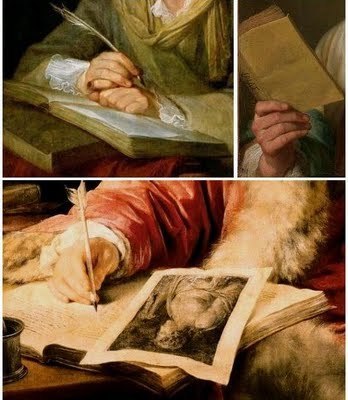

Larissa is the capital city of the Thessaly periphery of Greece and capital of the Larissa peripheral unit. It is a principal agricultural centre and a national transportation hub, linked by road and rail with the port of Volos and with Thessaloniki and Athens.
Antiquity. The name Larissa, inherited from the Pelasgian settlers— an alternative name for the district was Pelasgiotis— was common to many Pelasgian towns: the ancient Greek word larissa means "stronghold".
The area around Larissa was extremely fruitful; it was agriculturally important and in antiquity was known for its horses.
Larissa, sometimes written Larisa on ancient coins and inscriptions, is near the site of the Homeric Argissa. It appears in early times, when Thessaly was mainly governed by a few aristocratic families, as an important city under the rule of the Aleuadae, whose authority extended over the whole district of Pelasgiotis. This powerful family possessed for many generations before 369 BC the privilege of furnishing the tagus, the local term for the strategos of the combined Thessalian forces. The principal rivals of the Aleuadae were the Scopadac of Crannon, the remains of which are about 14 miles south west.
It was in Larissa that Philip V of Macedonia signed in 197 BC a treaty with the Romans after his defeat at Cynoscephalae, and it was there also that Antiochus III, the Great, won a great victory, 192 BC.
As the chief city of ancient Thessaly, Larissa was directly annexed by Philip II of Macedon in 344, and from then on Larissa was under Macedonian control; in 196 B.C. Larissa became an ally of Rome and was the headquarters of the Thessalian League.
Larissa is frequently mentioned in connection with the Roman civil wars which preceded the establishment of the empire and Pompey sought refuge there after the defeat of Pharsalus.
The Larissa Chasma, a deep gash in the surface of Dione, a natural satellite of Saturn, was named after Larissa.
Mythology. The city is said in Greek mythology to have been founded by Acrisius, who was killed accidentally by his son, Perseus. There lived Peleus, the hero beloved by the gods, and his son Achilles; however, the city is not mentioned by Homer, unless it should be identified with Argissa of the Iliad.
In mythology, the nymph Larissa was a daughter of the primordial man Pelasgus. In Greek mythology, Pelasgus was the eponymous ancestor of the Pelasgians, the mythical inhabitants of Greece who established the worship of the Dodonaean Zeus, Hephaestus, the Cabeiri, and other divinities. In the different parts of the country once occupied by Pelasgians, there existed different traditions as to the origin and connection of Pelasgus. The Ancient Greeks used to believe even he was the first man. In Thessaly, Pelasgus was described as the father of Chlorus, and as the grandfather of Haemon, or as the father of Haemon, and as the grandfather of Thessalus, or again as a son of Poseidon and Larissa, and as the founder of the Thessalian Argos.
Btw, my surname sounds and is spelled like one geographical name too.
Historia nuntia vetustatis.
Search for your future in your past.

Published on May 21, 2011 04:50
May 6, 2011
more antiquity
More pictures and more antiquity on the page.
Rescuing information of some less known or forgotten objects of art from oblivion.
Artist: Mikhail Kozlovsky (1753-1802). Amour With An Arrow. (Tretyakovskaya Gallery):
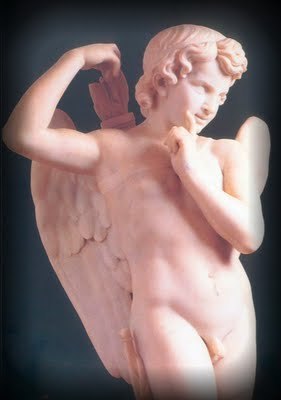
Vigil of Alexander. Artist: Mikhail Kozlovsky (1753-1802):

Ganymede. Artist: Mikhail Kozlovsky (1753-1802):


Rescuing information of some less known or forgotten objects of art from oblivion.
Artist: Mikhail Kozlovsky (1753-1802). Amour With An Arrow. (Tretyakovskaya Gallery):

Vigil of Alexander. Artist: Mikhail Kozlovsky (1753-1802):

Ganymede. Artist: Mikhail Kozlovsky (1753-1802):

Published on May 06, 2011 01:45
March 30, 2011
love
just some pics for your enjoyment
 "Sin of Self-Love Possesseth All Mine Eye And All My Soul and All My Every Part…"~Shakespeare
"Sin of Self-Love Possesseth All Mine Eye And All My Soul and All My Every Part…"~Shakespeare
 I am my own photomodel :)
I am my own photomodel :)
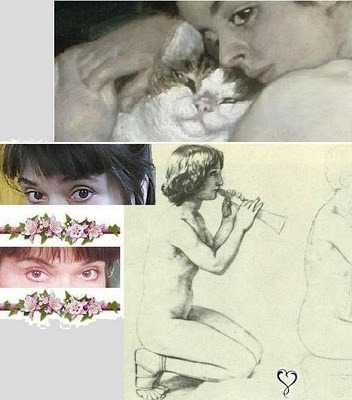
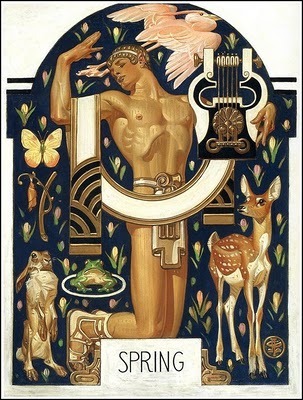

 "Sin of Self-Love Possesseth All Mine Eye And All My Soul and All My Every Part…"~Shakespeare
"Sin of Self-Love Possesseth All Mine Eye And All My Soul and All My Every Part…"~Shakespeare I am my own photomodel :)
I am my own photomodel :)

Published on March 30, 2011 23:14
March 27, 2011
The Island
Author of the blog tells/writes mostly about what is not so generally known as the modern day international pop-culture events and people, which Author dislikes, especially the modern day Russian ones.
The Russian-Lithuanian movie, released in 1971, is my favorite screen version of the book Treasure Island (1883) by Robert Louis Stevenson (1850-1894). Could I forget the main character Jim Hawkins? The blond blue-eyed boy with his golden skin and natural pony-tail, which long hair would be a usual hairstyle among the comely blue-eyed blond youths of the Baltic republics, soon after 1971. In 1971, other imaginative movie was realized, Death in Venice. Two movies in 1971. Two seashores. Two beautiful blond boys. Two screen versions. Two books by European classic writers. Coincidence? Personally I don't believe in coincidences.
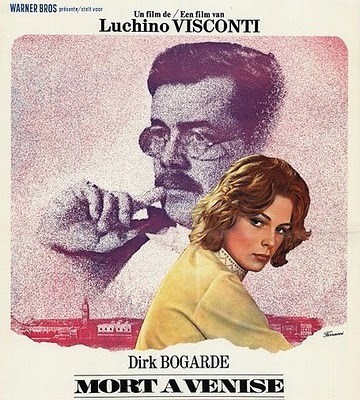 Could I forget the delightful soundtrack? The music with the distinct Celtic motif (note: it was in 1971, Evil empire) is in harmony with some frames and mood of the movie so much that it gives a perfect poetic wholeness which makes the movie a kind of a precious cameo, a "Stevensonian cameo", if you like. The music makes feel yearning for traveling and evokes two mottos in my mind: "To strive, to seek, to find, and not to yield" (Alfred Tennyson, 1809-1892) and "In spite of everything". In the video, I use only three melodies from the movie and all the pictures which I could find on the Net. Unfortunately, not all of the pictures are large enough to look very well in my video. In the movie, Jim looks so nice when walking with the tray in hands as the ship's boy on board of the Hispaniola at the hour when he brings the morning meal to the Captain's table. Wearing the bandana, with his golden locks covered, he looks manlier yet so seductive anyway. How sexy he looks when his white shirt has got dirty and torn in the course of the venture and fighting, with the golden skin of his shoulders being visible in the tears/slits… I especially love the close-ups of Jim Hawkins with the adult personages of the book/movie: "three together Jim, Squire Trelawney and Dr Livesey", "Jim and Long John Silver", "Jim and Ben Gunn". When this last man caught Jim suddenly in the shrubbery of the island, the boy floundered so nicely in the man's arms that it looked like a most alluring scene in the movie, which in fact has more than one ambiguous and seductive mise-en-scène with the boy, quite subtle to be understandable to some initiated aesthetes only, at those times as well as nowadays. Long John Silver, "owner of The Spy-glass tavern and a former sea cook", is played by one of the most renowned and oldest cinema-actors of Soviet Russia, and his fiendish personage is now nostalgically called "most charming John Silver ever", and I love the man's look and voice too, though I believe John Silver's age should be a little bit younger. Other two oldest and most renowned Russian actors performed in the movie, and their roles in this movie proved to be their last cinema-performances.
Could I forget the delightful soundtrack? The music with the distinct Celtic motif (note: it was in 1971, Evil empire) is in harmony with some frames and mood of the movie so much that it gives a perfect poetic wholeness which makes the movie a kind of a precious cameo, a "Stevensonian cameo", if you like. The music makes feel yearning for traveling and evokes two mottos in my mind: "To strive, to seek, to find, and not to yield" (Alfred Tennyson, 1809-1892) and "In spite of everything". In the video, I use only three melodies from the movie and all the pictures which I could find on the Net. Unfortunately, not all of the pictures are large enough to look very well in my video. In the movie, Jim looks so nice when walking with the tray in hands as the ship's boy on board of the Hispaniola at the hour when he brings the morning meal to the Captain's table. Wearing the bandana, with his golden locks covered, he looks manlier yet so seductive anyway. How sexy he looks when his white shirt has got dirty and torn in the course of the venture and fighting, with the golden skin of his shoulders being visible in the tears/slits… I especially love the close-ups of Jim Hawkins with the adult personages of the book/movie: "three together Jim, Squire Trelawney and Dr Livesey", "Jim and Long John Silver", "Jim and Ben Gunn". When this last man caught Jim suddenly in the shrubbery of the island, the boy floundered so nicely in the man's arms that it looked like a most alluring scene in the movie, which in fact has more than one ambiguous and seductive mise-en-scène with the boy, quite subtle to be understandable to some initiated aesthetes only, at those times as well as nowadays. Long John Silver, "owner of The Spy-glass tavern and a former sea cook", is played by one of the most renowned and oldest cinema-actors of Soviet Russia, and his fiendish personage is now nostalgically called "most charming John Silver ever", and I love the man's look and voice too, though I believe John Silver's age should be a little bit younger. Other two oldest and most renowned Russian actors performed in the movie, and their roles in this movie proved to be their last cinema-performances. 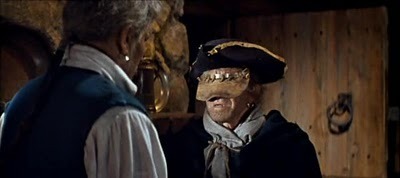 Jim Hawkins is played by the boy of the name of Aare Laanemets (1954-2000) from Estonia, and his image was one of my first sex icons in my young heart, which icons were many, I have to say, and all of them were male, and he came to the Top--what wonder?--I could know neither of Björn Andrésen (b. 1955) nor of the movie Death in Venice nor of the book by Thomas Mann (1875-1955), at those times. Young Aare could become a new sex symbol of Russian cinematograph and pop-culture; after his impressive film debut, he could be a movie star or cast in roles for several interesting movies like the British actor John Moulder-Brown (b. 1953)--but sex symbols were not of use, to put it mildly, in the Soviet times. If an actor looked hot and sexy, he was used for performing roles of all sorts of class enemies, German SS officers and other fiendish characters, which was to indicate that any hotness, beautiful look and sex appeal were both wrong and of no importance in art and life, and which in some extraordinary way and quite subliminally worked in a different way forming/cultivating a strong addiction to fiendish men and class enemies in minds of some young girls and female viewers of Russia. Reading the boy's surname "Laanemets", so difficult to be pronounced and remembered, I thought he was a Lithuanian, because in the movie Treasure Island, two Lithuanian popular cinema-theatre-actors I could see beside him: "Squire Trelawney" and "Dr Livesey"; and after the show, however much I endeavoured, I could not find any additional info about the teenager actor, in the 1970s as well as later, when I saw the movie once again. Only at present, on the Net, I could do it, and now this is my tribute to the star boy, who is no more, and who left me much earlier than he died: first it was when I failed tracing him and forgot, and then when he had grown up becoming an adult man and talented actor working in theatres of Tallinn and Parnu and his adolescent beauty passed away forever, and this last fact was the only consolation for me at the moment when I learnt of his premature death.
Jim Hawkins is played by the boy of the name of Aare Laanemets (1954-2000) from Estonia, and his image was one of my first sex icons in my young heart, which icons were many, I have to say, and all of them were male, and he came to the Top--what wonder?--I could know neither of Björn Andrésen (b. 1955) nor of the movie Death in Venice nor of the book by Thomas Mann (1875-1955), at those times. Young Aare could become a new sex symbol of Russian cinematograph and pop-culture; after his impressive film debut, he could be a movie star or cast in roles for several interesting movies like the British actor John Moulder-Brown (b. 1953)--but sex symbols were not of use, to put it mildly, in the Soviet times. If an actor looked hot and sexy, he was used for performing roles of all sorts of class enemies, German SS officers and other fiendish characters, which was to indicate that any hotness, beautiful look and sex appeal were both wrong and of no importance in art and life, and which in some extraordinary way and quite subliminally worked in a different way forming/cultivating a strong addiction to fiendish men and class enemies in minds of some young girls and female viewers of Russia. Reading the boy's surname "Laanemets", so difficult to be pronounced and remembered, I thought he was a Lithuanian, because in the movie Treasure Island, two Lithuanian popular cinema-theatre-actors I could see beside him: "Squire Trelawney" and "Dr Livesey"; and after the show, however much I endeavoured, I could not find any additional info about the teenager actor, in the 1970s as well as later, when I saw the movie once again. Only at present, on the Net, I could do it, and now this is my tribute to the star boy, who is no more, and who left me much earlier than he died: first it was when I failed tracing him and forgot, and then when he had grown up becoming an adult man and talented actor working in theatres of Tallinn and Parnu and his adolescent beauty passed away forever, and this last fact was the only consolation for me at the moment when I learnt of his premature death. 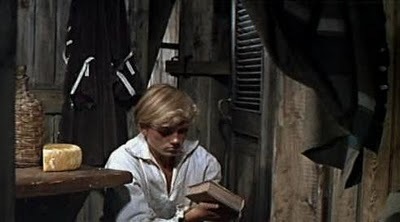
Published on March 27, 2011 02:00
March 18, 2011
debris fields for ever (bits of history)
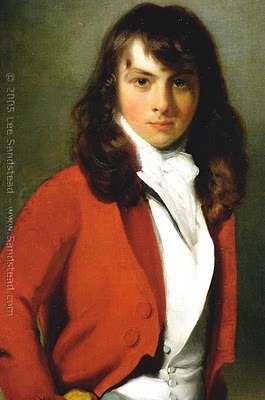
around Dracula
As we know, Count Dracula is out and about again and as always, and today we shall talk about Van Helsing movie, which has a direct relation to the Vampire (unlike the lovely picture above). Gabriel Van Helsing is "also tasked with preventing the last of the Valerious family from falling into purgatory; the family swore to kill Dracula nine generations ago and is unable to enter Heaven until they succeed." That's all right, but the name "Valerious". The Name indicates to descending from Marcus Valerius Messalla Corvinus, but it's not true, to put it mildly, because "no family line records survived." Nowadays and in Middle Ages, there always were people who claim descent from a patrician line, from the most ancient and famous or any patrician families/gentes of ancient Rome (Julii, Anii and others), but there is not one shred of evidence. As we know, The Wallachian-Hungarian family of Korvin, which came to prominence with Janos Hunyadi and his son, Matthias Corvinus Hunyadi, King of Hungary and Bohemia, claimed to be descended from Marcus Valerius Messalla Corvinus (from the Valerii family)--later, some noble Polish families who later followed the Hunyadis--but there is scant if any historical evidence. The Hunyadis called themselves "Corvinus" and had their coins minted displaying a "raven with a ring". Their biographer, "the Italian Antonio Bonfini, who was well-versed with the classical Latin authors, provided the Hunyadis with the epithet Corvinus. This was supposedly due to a case in which Messalla, while on the battlefield, accepted a challenge to single combat issued to the Romans by a barbarian warrior of great size and strength. Suddenly, a raven flew from a trunk, perched upon Messalla's helmet, and began to attack his foe's eyes with its beak so fiercely that the barbarian was blinded, and the Roman beat him easily. In memory of this event, Messalla's agnomen Corvinus (from Corvus, Raven) was interpreted as derived from this event."
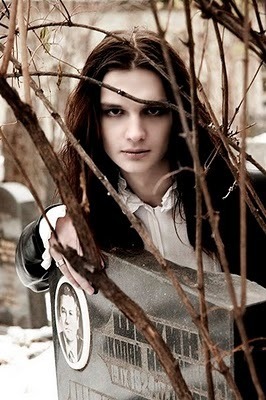
"Radio Active" : )
In the first part of 18th century, in one of Russian provinces, a fresh corpse of a prehistoric pangolin was found by peasants in the forests or fields--which is a fact. The dead animal was defined as an unknown and unbelievable animal, seen never before. A kind of a dinosaur, judging by the chronicle record. 7 metres long, from the tip of the tail to the nose, with wings like a bat's, walking on two legs, with small front paws. The corpse was measured, described in details and recorded by the local officials, which is a fact. Then rare finding was placed in a barrel full of vodka instead of spirit; the barrel was placed on a cart, and accompanied by several men, the carriage took the road to the capital of the Russian Empire, the new-built city of Saint Petersburg. But the amazing and unique finding never reached the place of destination and remained generally unknown for ever, which is a fact too. It was said that on the way, the several men drank all the vodka from the barrel and ate up the dinosaur using it as a snack, which is a legend--but it sounds so verisimilar that it may be regarded as a fact, in my view. Nowadays, in the same Russian province, according to the news in autumn 2010, an unknown animal drinks blood of hens by night and the few witnesses describe the animal as a winged dinosaur, only much smaller than that found in the past, only 1 metre long. The catastrophic fires in summer 2010 could force the animal to leave the dense forests.
link
http://aediculaantinoi.wordpress.com/
in the Aedicula Antinoi, one can find a lot of things about Antinous, from essays on Antinous and various deities, to essays about Antinous in relation to different theological issues, to lots of collected/translated texts on Antinous, Hadrian, etc. A great deal of that material is going to be published in the upcoming books The Doctor's Notes, Volume One: Devotio Antinoo and The Doctor's Notes, Volume Two: Studium Antinoi.

Published on March 18, 2011 21:18
March 8, 2011
temperance hotel
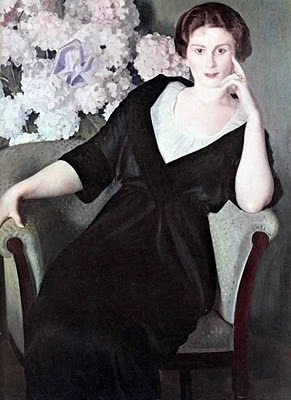 To dream the impossible dream
To dream the impossible dreamTo fight the unbeatable foe
To bear with unbearable sorrow
To run where the brave dare not go
To right the unrightable wrong
To love pure and chaste from afar
To try when your arms are too weary
To reach the unreachable star
This is my quest
To follow that star
No matter how hopeless
No matter how far
To fight for the right
Without question or pause
To be willing to march into Hell
For a heavenly cause
And I know if I'll only be true
To this glorious quest
That my heart will lie peaceful and calm
When I'm laid to my rest
And the world will be better for this
That one man, scorned and covered with scars
Still strove with his last ounce of courage
To reach the unreachable star
(The Impossible Dream from Man of La Mancha)
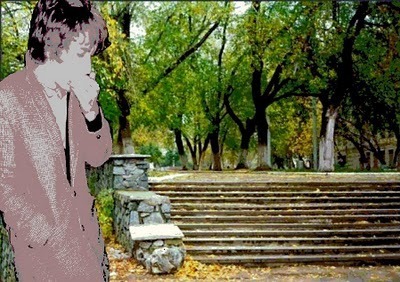
The story of the collage (above) is fantastic. I'll tell it later, maybe, updating this post, so keep watching.
Below, there is the link to the blog intro post, where I tell why I can write my old blog no longer (the reason is mysterious too)--
http://revueblanche.blogspot.com/2010...
Published on March 08, 2011 19:32
March 5, 2011
2 old picturs
Published on March 05, 2011 21:53
February 22, 2011
curios
Recently, on the Net, I tried to find a photo or description or mention of one old mechanical toy/automation, 18th or 19th century, in shape of a big framed picture on a wall. Everyone knows what the wondrous devices look like, 18th or 19th century or earlier and more ancient, but I search for something like the one which I saw with my own eyes in the 1960s Polish movie
http://www.youtube.com/watch?v=EZ3wbwgczJM
and then I saw anything of the kind never again (neither on TV, nor in another movie, nor in a magazine nor on the Net) which is strange, because the curio was amazingly nice. Perhaps it was a sort of a musical box, only made in shape of a framed canvas. In the picture we could see a young piano-player and his listeners and home pets around. When the mechanism is on, all the flat figures in the picture begin moving and the sweet music begin to sound: the piano-player begins moving his hands, the listeners move their heads rhythmically and the dog moves its little tail. A moving picture, yet not a movie or animation, but an old mechanical picture/toy. I can't rmember exactly the human personages of the picture, but they obviously were young, perhaps children. And I don't know right English words which I should use searching for the curio. According to my latest search, it may be called "antique musical picture frame" and can be found in a museum only, but I am not sure and still can't find an image or even a mention. As I think, the curio was taken for filming from one of museums of Poland. In 18th and 19th centuries or even earlier, the curios could be seen in palaces, and now they can be seen in museums, the cabinets of curiosities or Wunderkammern, of course. I have asked some online friends, artists and antiquarians, but they know nothing of it. I searched on Wikipedia and Yahoo Answers, but in vain. The fact that an information/image cannot be found on Wikipedia seems unnatural to me.
While I searched for that, one more question about another curio aroused at mine, and I can't see a reason why I should not share it on the blog. When watching TV about Rudolf II of Austria (1552–1612) [--Holy Roman Emperor as Rudolf II (1576–1612), King of Hungary and Croatia, as Rudolf (1572–1608), King of Bohemia as Rudolf II (1575–1608/1611) and Archduke of Austria as Rudolf V (1576–1608), a member of the House of Habsburg--] I learnt about a picture which can be called two-side painting, but I am not sure about right English words to begin searching. Oil on wood, but the wood is not a piece of flat bar, but thinnest laths. What I saw on TV was the king's portrait painted on the thinnest laths first, then the laths were turned round, and other picture was painted, heads of the king's two predecessors. Then the painting is framed (in a very special way) and placed on the wall. As you approach to the picture from one side, you can see the head of the king. As you approach from the opposite side, you can see the other picture, the heads of the predecessors. As it was told, the technique was known in the antiquity. I tried to find out about the technique, but in vain again. And I have not the image. No images, no online information. Below, there is the portrait of King Rudolf II, painted as Vertumnus, Roman God of the seasons, which the king loved, but the picture's technique is quite traditional--
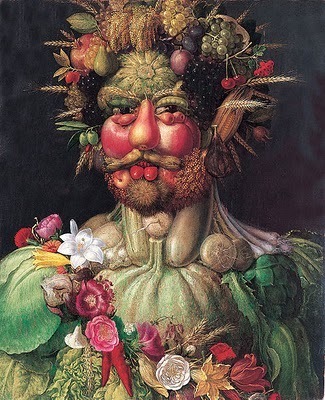

http://www.youtube.com/watch?v=EZ3wbwgczJM
and then I saw anything of the kind never again (neither on TV, nor in another movie, nor in a magazine nor on the Net) which is strange, because the curio was amazingly nice. Perhaps it was a sort of a musical box, only made in shape of a framed canvas. In the picture we could see a young piano-player and his listeners and home pets around. When the mechanism is on, all the flat figures in the picture begin moving and the sweet music begin to sound: the piano-player begins moving his hands, the listeners move their heads rhythmically and the dog moves its little tail. A moving picture, yet not a movie or animation, but an old mechanical picture/toy. I can't rmember exactly the human personages of the picture, but they obviously were young, perhaps children. And I don't know right English words which I should use searching for the curio. According to my latest search, it may be called "antique musical picture frame" and can be found in a museum only, but I am not sure and still can't find an image or even a mention. As I think, the curio was taken for filming from one of museums of Poland. In 18th and 19th centuries or even earlier, the curios could be seen in palaces, and now they can be seen in museums, the cabinets of curiosities or Wunderkammern, of course. I have asked some online friends, artists and antiquarians, but they know nothing of it. I searched on Wikipedia and Yahoo Answers, but in vain. The fact that an information/image cannot be found on Wikipedia seems unnatural to me.
While I searched for that, one more question about another curio aroused at mine, and I can't see a reason why I should not share it on the blog. When watching TV about Rudolf II of Austria (1552–1612) [--Holy Roman Emperor as Rudolf II (1576–1612), King of Hungary and Croatia, as Rudolf (1572–1608), King of Bohemia as Rudolf II (1575–1608/1611) and Archduke of Austria as Rudolf V (1576–1608), a member of the House of Habsburg--] I learnt about a picture which can be called two-side painting, but I am not sure about right English words to begin searching. Oil on wood, but the wood is not a piece of flat bar, but thinnest laths. What I saw on TV was the king's portrait painted on the thinnest laths first, then the laths were turned round, and other picture was painted, heads of the king's two predecessors. Then the painting is framed (in a very special way) and placed on the wall. As you approach to the picture from one side, you can see the head of the king. As you approach from the opposite side, you can see the other picture, the heads of the predecessors. As it was told, the technique was known in the antiquity. I tried to find out about the technique, but in vain again. And I have not the image. No images, no online information. Below, there is the portrait of King Rudolf II, painted as Vertumnus, Roman God of the seasons, which the king loved, but the picture's technique is quite traditional--

Published on February 22, 2011 23:24
antique influence 2
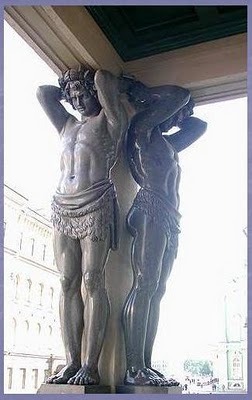 Some pictures again. The atlantes that proper the portico of the New Hermitage in Saint Petersburg are most beautiful in the world, in my view.
Some pictures again. The atlantes that proper the portico of the New Hermitage in Saint Petersburg are most beautiful in the world, in my view.
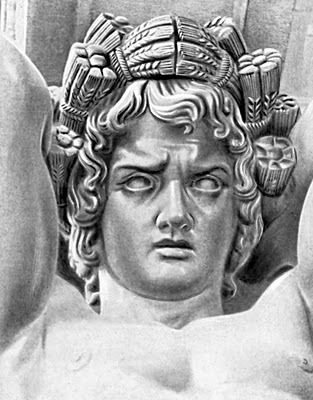
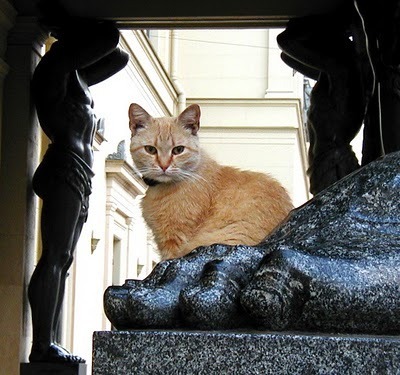
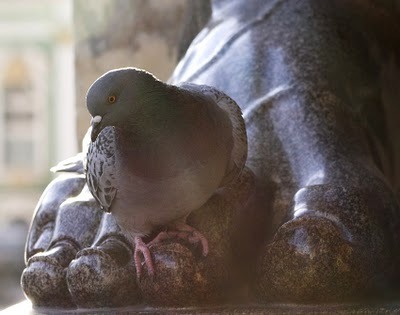
Published on February 22, 2011 20:14
antique influence 1
Ancient arts influence. Only some pictures. The Agate Pavilion made by Charles Cameron (1745-1812), the Scottish architect who lived and worked in Saint Petersburg
http://en.wikipedia.org/wiki/Charles_Cameron_(architect)
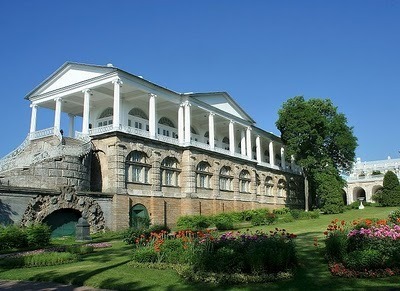
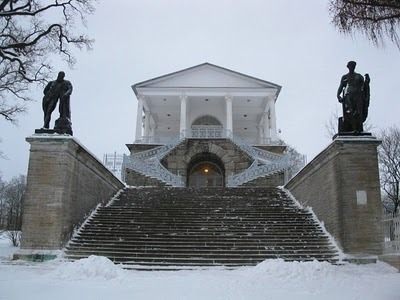
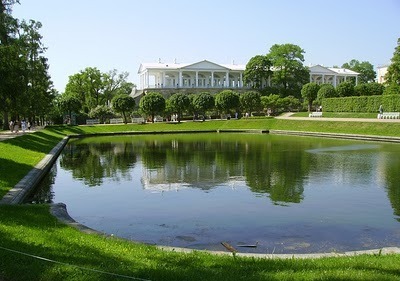

http://en.wikipedia.org/wiki/Charles_Cameron_(architect)



Published on February 22, 2011 19:26

